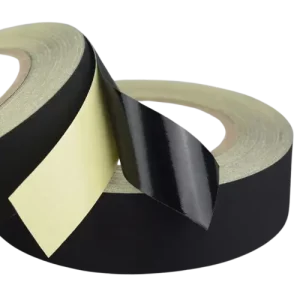
。
# Double-Sided Tape: The Invisible Bond for Everyday Solutions
## The Unsung Hero of Adhesives
When it comes to quick fixes and permanent solutions, double-sided tape often goes unnoticed despite its incredible versatility. This simple yet powerful adhesive has revolutionized how we approach bonding in both professional and personal settings. Unlike traditional tape that leaves one side exposed, double-sided tape creates a clean, invisible bond between surfaces, making it ideal for countless applications.
## What Makes Double-Sided Tape Special?
Unique Construction
Double-sided tape consists of a carrier material (often foam, film, or paper) coated with adhesive on both sides. This construction allows it to bond two surfaces together without any visible means of attachment. The thickness and flexibility of the carrier material can vary depending on the intended use, from ultra-thin varieties for photo mounting to thicker versions for uneven surfaces.
Variety of Strengths
Manufacturers produce double-sided tape in different strengths to accommodate various needs. Light-duty versions work well for paper crafts and temporary displays, while heavy-duty industrial-grade tapes can permanently bond metal, wood, or plastic components in manufacturing applications.
## Practical Applications in Daily Life
Home Organization
Double-sided tape solves numerous household challenges. Use it to secure rugs to hardwood floors, mount pictures without nails, or keep cabinet liners in place. Its clean removal (with proper techniques) makes it perfect for renters who can’t make permanent alterations.
Crafting and DIY Projects
Crafters love double-sided tape for scrapbooking, card making, and other paper crafts where glue might cause wrinkling. DIY enthusiasts use it for temporary holds during projects or for attaching lightweight decorations that need to stay put.
Automotive and Industrial Uses
In more demanding environments, high-performance double-sided tapes bond trim pieces in vehicles, secure nameplates on equipment, or mount mirrors without mechanical fasteners. Some automotive tapes withstand extreme temperatures and vibrations better than traditional adhesives.
## Choosing the Right Double-Sided Tape
Consider these factors when selecting double-sided tape:
- Surface Materials: Different adhesives work better on various surfaces (fabric, metal, plastic, etc.)
- Weight Requirements: Ensure the tape can support the weight of what you’re bonding
- Environmental Conditions: Consider temperature, moisture, and UV exposure
- Removability: Determine whether you need permanent or temporary bonding
- Thickness: Thicker tapes fill gaps better for uneven surfaces
## Tips for Optimal Use
Surface Preparation
Clean surfaces thoroughly before application. Dust, oil, or moisture can significantly reduce adhesion. For best results, wipe surfaces with isopropyl alcohol and let them dry completely.
Application Technique
Peel back a small portion of the liner rather than removing it entirely. This allows for better positioning before committing to full adhesion. Use a roller or firm pressure to ensure complete contact between the tape and both surfaces.
Removal Methods
For residue-free removal, heat the tape gently with a hairdryer to soften the adhesive. Slowly peel at a 180-degree angle. For stubborn residue, use adhesive removers or oils like citrus or eucalyptus.
## The Future of Double-Sided Tape
Keyword: double sided tape
Innovations continue to improve double-sided tape technology. New formulations offer stronger bonds, better temperature resistance, and even conductive properties for electronic applications. Eco-friendly options using biodegradable materials are gaining popularity as sustainability